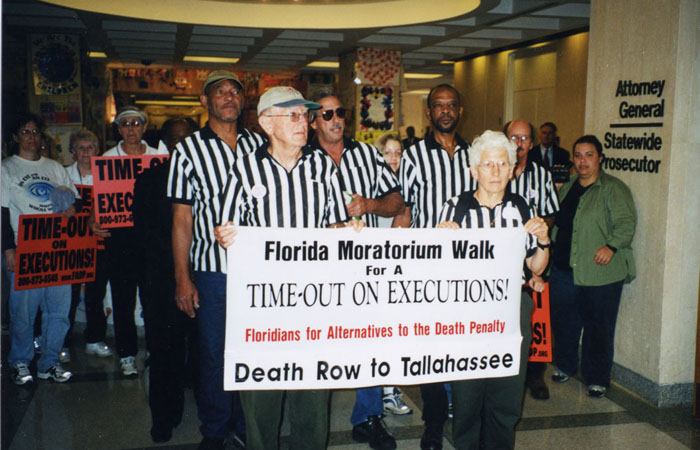Collections : [National Death Penalty Archive]
National Death Penalty Archive
Researchers, writers, activists, and records on capital punishment in the United States.
The National Death Penalty Archive (NDPA) is a partnership between the University at Albany Libraries and the Capital Punishment Research Initiative (CPRI) at the University's School of Criminal Justice. In 1999, researchers at the School of Criminal Justice formally established the CPRI. Its overarching goals were research and education -- initiate capital punishment research activities, facilitate collaboration among researchers, and make findings and information available to legal and criminal justice policymakers, practitioners, and the public. One of the original goals of the CPRI was to establish and maintain a collection of archival materials documenting the important history of capital punishment, and to provide resources for historical scholarship. This growing collection of archival materials is housed in the M.E. Grenander Department of Special Collections and Archives, which is located in the University's state of the art Science Library. Open since 1999, the new archival repository includes climate-controlled storage for more than 25,000 cubic feet. The following collections have been acquired for the NDPA through the collaborative efforts of the CPRI and the University Libraries; work is continuing to build this important link to the history of capital punishment in the United States.
Search Constraints
Start Over You searched for: Collecting Area National Death Penalty Archive Remove constraint Collecting Area: National Death Penalty Archive Level Subseries Remove constraint Level: Subseries Date range 1937 to 1939 Remove constraint Date range: <span class="from" data-blrl-begin="1937">1937</span> to <span class="to" data-blrl-end="1939">1939</span>
1 - 6 of 6 entries
Search Results
New School Lecture Notes, 1935-1981 1.60 cubic ft.
This subseries contains lecture notes handwritten by Ernest van den Haag on yellow legal size paper. This paper is very acidic and brittle. Van den Haag lectured on sociology and psychology while at the New School for Social Research from 1953 to 1980. The courses include Philosophy of Personality, The Individual in Crisis, and Popular Culture. his lectures touched on many topics in social science including democracy, postulates, and many aspects of American culture. Some materials contained in this subseries were collected in the years leading up to his lecture career including the 1930s and 1940s, but most of the lecture material is from the early 1950s through 1981.
